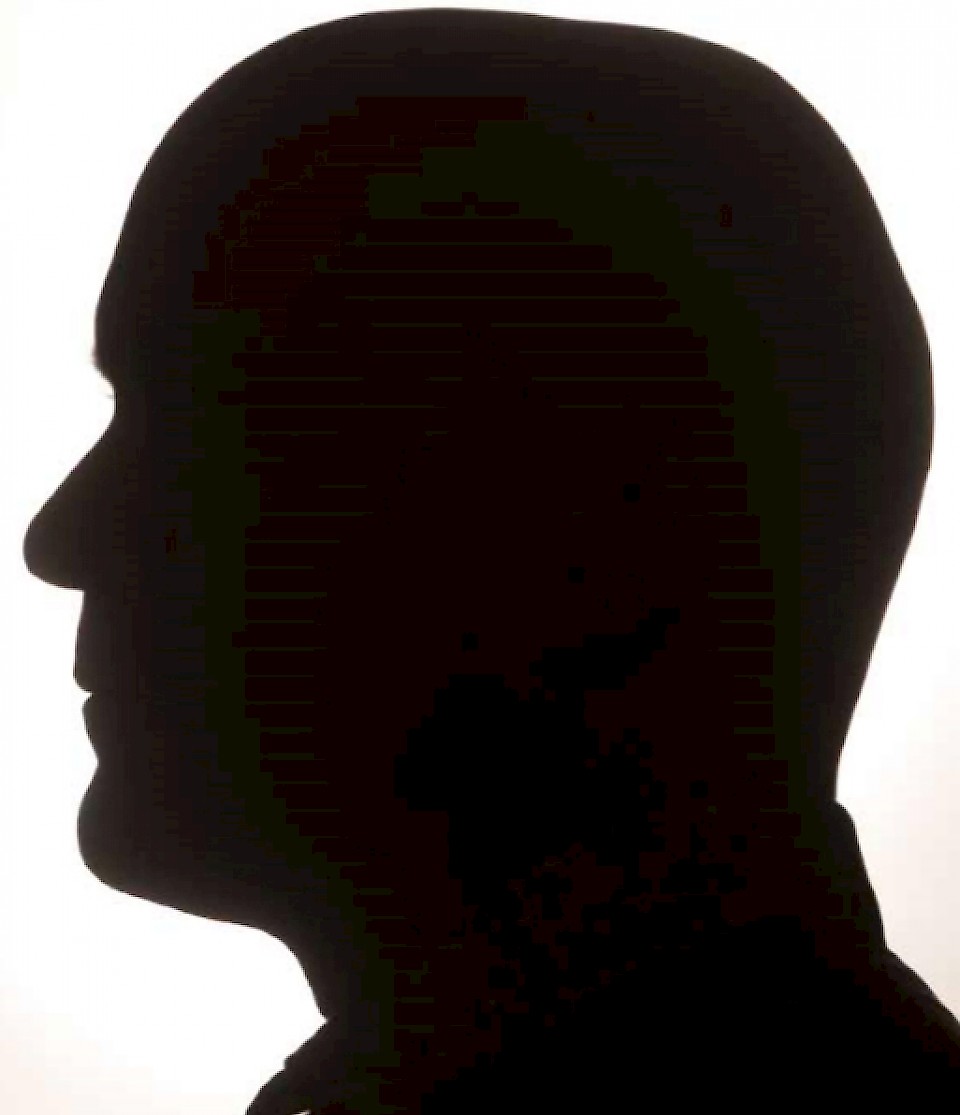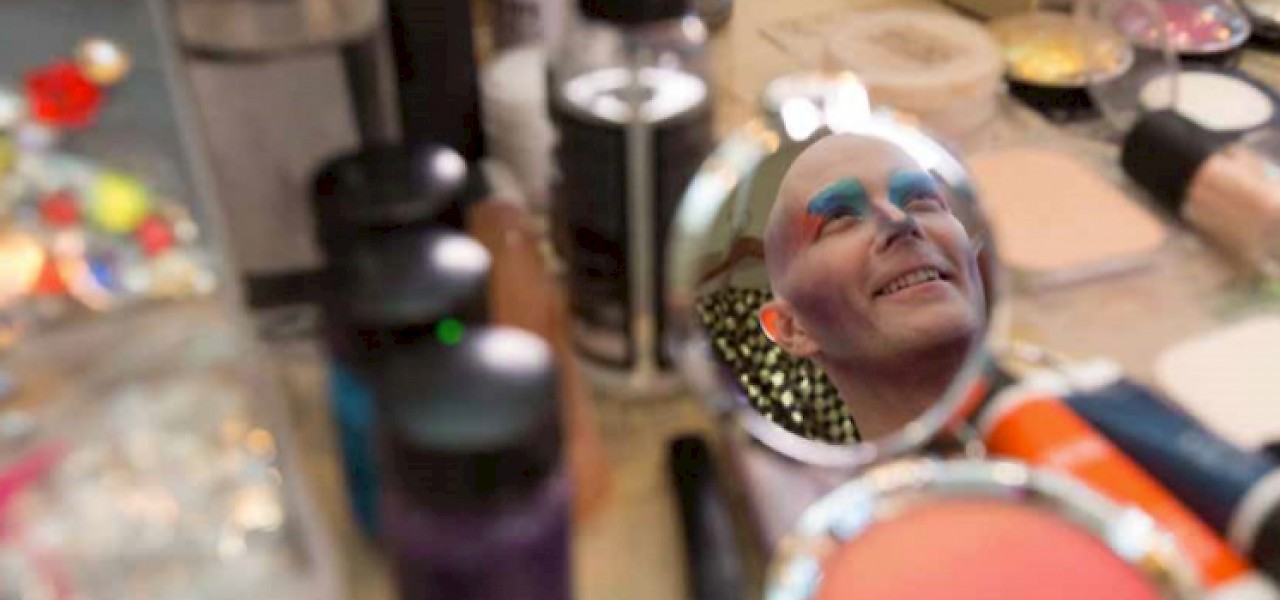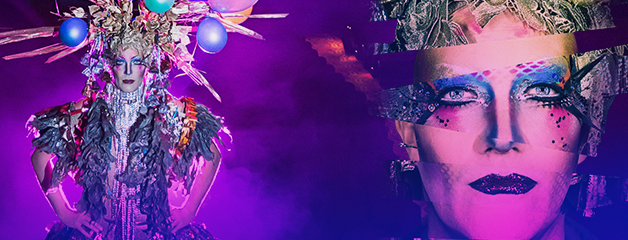Interview
You've Got to Fall Apart
I spoke with Taylor Mac via Skype on August 14, 2017. I was in my office in upstate New York, and he was in Provincetown, Massachusetts. Taylor was on his back, with enormous red headphones hooked over his shaved head, and he’d placed the viewing device on his stomach, so the effect was of looking at him from below. First a bit of a green T-shirt with blond chest hairs in the V-neck, then Taylor’s neck and round chin, and at last his handsome, cheerful face. Taylor’s responses were fluid and frequently surprising; he laughed often during our chat and tended to backtrack to refine ideas or make rhetorical connections. An edited version follows.

DK: I want to ask about origins and process. If we go back to before this play was formed—before there was a zygote or even a sperm and egg, when it was, say, a mere twinkle in your eye—what do you think was the generating prompt?
TM: The moment I attach it to is the San Francisco AIDS Walk in 1987. I heard about it from a community musical theater diva who knew gay people, but I didn’t know any out gay people—at least, not people who were out to me as a child in my town of Stockton. My friend Marcy and I decided to go, so the first time I ever met or saw an out homosexual, there were thousands, all at the same time! That was the germ for this particular show: I saw a whole community that was built as a result of being torn apart. Obviously, queers were a community before that, but I don’t believe they’d protested with such deadly urgency before the AIDS epidemic, so it was a profound experience for a kid witnessing queer agency and queer history for the first time. I think it made me the artist I am today, because I’ve spent the rest of my life making work I could look at and say, “Oh, this is actually about that feeling I had as a kid.” With The Lily’s Revenge I kind of did that, but only subconsciously, so [24-Decade] was me going about it consciously, saying, “I’m going to make a work that’s about communities building themselves as a result of falling apart.”
DK: How old were you then?
TM: I was fourteen, I think. Marcy was two years older, and she could drive.
DK: Let’s talk more specifically about A 24-Decade History of Popular Music. You built up to the marathon by doing one-hour, three-hour, six-hour, twelve-hour workshops. Then came October 2016, and you did it all at once, which was glorious. Now you’re staging four six-hour segments in San Francisco. Is there a difference in the way you’re approaching the content or the dynamic, having established a long version and cutting it into parts, rather than developing something large out of pieces? tm: Well, what I found was that six-hour shows are the sweet spot. I always say that this wasn’t a twenty-four-hour durational performance, it was a six-year durational performance. We did, I think, 150 performances before the twenty-four-hour show, and most of those were in New York City. Every decade was performed in New York over those six years, many of them multiple times, so we were building the audience for the twenty-four-hour show; we were making the work with that audience. That audience that came last October, most of them had seen some installments. People sometimes say, “Oh, we’re building community with theater,” and that’s nice, but it’s just not true. So how could I really build community, I wondered. And I decided to do it by making a ritual whereby people come back to see installments over many years. That actually was a building of community, because what I found was that audience members would meet at the shows and create their own projects together, or friends would come together and go out afterward and talk about the show in the world at large. And that strengthened those friendships. I know that relationships have begun as a result of people meeting at the shows. Babies have been born as a result of people making love after the shows—maybe even at the shows, I don’t know!—so it really was this community thing. What I didn’t want to do was take the twenty-four-hour performance and plop it down anywhere, because it wouldn’t work—the audience for it was built for that show. People would come to a twenty-four hour show and maybe take it seriously and commit, but I don’t think the same energy would be there if they didn’t feel like “Ah, this is our show. We helped make it!” The six-hour shows are a way to keep the duration, because they’re still challenging—really challenging—to do, and they’re challenging for the audience. But they focus on the material more than the event. Which I like. And now we’re able to make a two week durational performance, because it’s four installments. The hope is that people come back over those two weeks—they’ll have time to go home, meditate on what they’ve seen, and come back and see the next chapter. dk: “Focus on the material more than the event.” Can you elaborate on that? Has the material or content changed, inasmuch as the world has changed since October?
TM: Yes and no. I think how people listen is the main thing that’s going to change. But that’s always the case with the work, because it’s never done the same way twice. Something always is happening in the world that frames our understanding. A Walt Whitman poem had a different meaning three years ago than it will today, but that’s the fun of the room. What hasn’t changed is the cycle of oppression in our country. Sure, the way of oppression changes, the intensity changes, but it’s the same oppression. Tactics that were used in the 1780s to keep women down were also used to stop Hillary Clinton from getting elected, so in some ways the show has always been about Trump and his movement. It’s all kind of there, but of course I’m also going to say stuff spontaneously. The day of the twenty-four-hour show, Pussygate had just happened, and that ended up getting incorporated. It always works that way.
DK: You’re classically trained—
TM: I’m classically trained!
DK: You’re classically trained, man—you can’t escape it. I saw you play Puck!
TM: I went to acting school. I did learn how to speak in verse, I did learn how to deconstruct a beat and deconstruct iambic pentameter and communicate it, and I learned Stanislavsky acting techniques. Primarily I’ve learned from doing, but I got a great foundation in an acting conservatory.
DK: And who are your influences as either performer or playwright?
TM: There are so many. The big one for this show is Nina Simone. There’s an aliveness to her performance, and she takes her imperfection and uses it to rally people, in tandem with her virtuosity. She’s got all her craft and her skill and her great, great talent, but she combines that with all that hurt and vulnerability—and with flat singing! She’s telling a story of inequality, so she’s trying to get at something, and it’s not always going to sound perfect; it’s going to have danger in it and… be off key a little bit, you know? I really took that style and applied it to this work in a way I hadn’t consciously done in the past.

DK: You have this complex structure of hours and decades and disappearing musicians, and against that a certain apparent chaos plays out. How did the structure arise? How did you come up with this kind of jungle gym on which to hang drag and wigs and songs and entertainment value.
TM: Whenever I make a piece, I ask how content dictates the form. I thought, here’s a community of audience members and performers and creators. I want to first build that community. I want them to be building as a result of being torn apart, so that what they’re experiencing is a way to access that idea. Well, I thought, it’s gotta be durational. They’ve gotta fall apart a little bit. And it’s gotta be excessive: there’s gotta be an onslaught of words and culture and history and ideas, so that as a result everyone starts to connect. “Oh, we’re going through this together!” Also audience participation: an excess of challenging yourself. Just when you think you don’t have anything more, I’m gonna make you do something else. At hour twelve, you’re going to have to run across the space and try to grab a balloon! You’re tired, you’ve been watching twelve hours, and now you’ve gotta compete for a space to sleep? The show had to get harder as it went on, within reason. I didn’t want people to revolt and walk out, but in New York I took everybody’s chairs, then gave the chairs back. They had to go through some discomfort before they got the chairs back. At the same time, I’ve researched how people do all-nighters. One thing is keep ’em moving. Keep ’em moving, shine bright lights, keep engaged, eat at certain times, eat lightly, eat certain kinds of food. Stand up, sit down, change your position a lot. I incorporated that into the work. The point wasn’t to destroy the audience, but to build them up while they’re kind of deteriorating. And the aesthetic is about me getting at something that’s not homogenous, that looks like lots of different types of things. “Oh, it’s both male and female, it’s chaotic and organized, there’s craft and improvisation—and yet there’s craft in the improv. It’s beautiful, it’s also ugly, it’s silly and also really well thought out.” It becomes a reflection of all that heterogeneity, instead of: “I know what I’m looking at.”
DK: A year ago, when you’d injured your back, you performed a three-hour 24-Decade workshop as a grown man in a T-shirt, jeans, and sneakers, with a gym bod, on a bed. What I found virtuosic was how, despite not wearing the Machine Dazzle garments, you generated that same charisma, queer energy, and confrontational non-masculinity you portray in costume. Clearly, something you’re doing is independent of the costumes, and yet the costumes contribute something. Could you talk about that?
TM: The drag for me is not a costume. I think of it as how I look on the inside, something I’m exposing that I would normally keep hidden. But onstage, you’re responsible for exposing something about yourself, I believe. You have to risk. And it so happens I found this wonderful artist, Machine [Dazzle], who understands what I look like on the inside. We’ve worked together for so long that I’m able to trust him, and he just takes it from there. I feel we have a kinship: I’m wearing both how I feel I look on the inside and what Machine sees inside of me.
DK: Finally, what’s it like bringing this show to San Francisco?
TM: Well, it’s what we were talking about: I was in San Francisco for that AIDS walk, and that’s how it started, so it kind of means everything to me. I don’t think the show would be complete if we didn’t bring the entire thing to the Bay Area. And San Francisco’s getting the first experience of four six-hour shows, for the people who choose to see all four. But if they come to just one chapter, it’s still a six-hour show! What I’ll also say is it’s our first durational experience in a large theater. I mean, the Curran is a Broadway touring house—I think it’s somewhere around sixteen hundred seats. And I love it! So often queers are relegated to basement bars. I think of myself as a fool, and the fool used to hang out in court because that’s where the fool is most useful, right? Then somewhere along the line the fool got relegated to the street and the gutter and the outdoor fair. And the drag-queen fool— definitely the gay bar. So it feels liberating to perform in the big space. It feels like Ah, yes! Playing to power. The status quo is not in charge of where I perform anymore, so it’s very moving to get to perform there, like a little personal revolution. There’s a lot of freshness and experimentation, a lot of spontaneity that’s gonna happen as a result. We did Celebrate Brooklyn for three thousand people, and it was incredible in the park, so I know the show works at that size—in fact, in some ways even more so, because I don’t have to squash my queerness into a box. It gets to explode!


